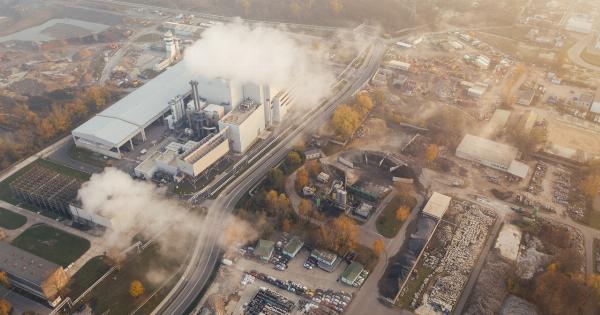Acute hepatitis is a condition characterized by inflammation of the liver, which can occur in children due to various risk factors.
Recent studies have identified a new risk factor that has been significantly associated with the development of acute hepatitis in children. This article will explore this new risk factor and its implications on the prevalence and management of acute hepatitis in pediatric patients.
Understanding Acute Hepatitis
Acute hepatitis refers to the sudden onset of liver inflammation, which can lead to a range of symptoms such as fatigue, jaundice, abdominal pain, and elevated liver enzymes.
In children, this condition can be caused by viral infections, certain medications, autoimmune diseases, metabolic disorders, and exposure to toxins or harmful substances.
Traditional Risk Factors for Acute Hepatitis in Children
Historically, viral infections have been the primary cause of acute hepatitis in children.
Hepatitis A, B, and C viruses have been recognized as the major culprits, with transmission occurring through contaminated food or water, blood transfusions, or mother-to-child transmission during childbirth. Additionally, certain medications, especially those associated with hepatotoxicity, have also been linked to acute hepatitis in pediatric patients.
The Discovery of a New Risk Factor
Recent research has shed light on a previously unidentified risk factor for acute hepatitis in children.
Studies conducted at reputable medical institutions have shown a correlation between exposure to environmental pollutants and the development of acute hepatitis in pediatric patients. These pollutants include chemicals found in air pollution, industrial waste, and agricultural pesticides.
Environmental Pollutants and Acute Hepatitis
Exposure to environmental pollutants can have profound effects on liver health, especially in children whose immune systems are still developing.
The liver plays a crucial role in detoxifying harmful substances, and prolonged exposure to pollutants can overwhelm its capacity to neutralize or eliminate toxins effectively. As a result, liver inflammation can occur, leading to the development of acute hepatitis.
Evidence from Epidemiological Studies
Epidemiological studies have provided compelling evidence linking environmental pollutants to acute hepatitis in children.
One study conducted in a highly industrialized region found a significantly higher incidence of acute hepatitis cases among children living near pollution-emitting factories compared to those residing in more pristine environments.
Furthermore, a retrospective analysis of medical records revealed a strong association between the levels of certain environmental pollutants and the risk of developing acute hepatitis in children.
These findings indicate that exposure to pollutants is a potential risk factor that should not be overlooked in the diagnosis and management of acute hepatitis cases.
Mechanisms of Liver Injury
The exact mechanisms by which environmental pollutants contribute to liver inflammation and the development of acute hepatitis in children are still being investigated. However, several theories have been proposed to explain this phenomenon.
One possible mechanism involves the direct toxic effects of pollutants on liver cells, leading to cellular damage and subsequent inflammation.
Another proposed mechanism suggests that environmental pollutants may trigger an immune response within the liver.
This immune response can result in the release of pro-inflammatory cytokines and the recruitment of immune cells, further exacerbating liver inflammation.
Increased Susceptibility in Children
Children are particularly vulnerable to the hepatotoxic effects of environmental pollutants due to several factors. Their smaller body size and developing organs make them more susceptible to toxic exposures.
Additionally, children tend to spend more time outdoors and have a higher respiratory rate, increasing their inhalation of pollutants present in the air.
Moreover, children have a longer life expectancy, and long-term exposure to environmental pollutants can have cumulative effects on liver health.
This increased susceptibility calls for stricter regulations and preventive measures to minimize the risk of acute hepatitis in pediatric populations.
Prevention and Management Strategies
Given the significant impact of environmental pollutants on the development of acute hepatitis in children, preventive measures are of utmost importance.
Government bodies and public health agencies play a crucial role in implementing regulations to reduce pollution levels and enforce strict industrial waste management practices.
At an individual level, parents and caregivers can reduce exposure to environmental pollutants by ensuring good hygiene practices, such as proper handwashing and safe food handling.
Additionally, providing children with a healthy and balanced diet, rich in antioxidants and liver-protective nutrients, may help mitigate the effects of pollutants on liver health.
In terms of management, timely diagnosis and treatment are essential for favorable outcomes in acute hepatitis cases.
Medical professionals should consider environmental exposure as a potential risk factor, especially in children living in areas with high pollution levels. Diagnostic tests, including liver function tests, viral serology, and imaging studies, can aid in confirming the diagnosis and determining the extent of liver damage.
Treatment primarily focuses on supportive care, including hydration, adequate nutrition, and rest. In severe cases, hospitalization and monitoring may be necessary.
Liver protective measures, such as avoiding hepatotoxic medications and alcohol, should also be emphasized to prevent further damage to the liver.
The Importance of Public Awareness
Public awareness campaigns play a crucial role in highlighting the association between environmental pollutants and acute hepatitis in children.
Educating parents, teachers, and healthcare providers about the potential risks and preventive measures can help reduce the incidence and severity of acute hepatitis cases.
Furthermore, increased awareness can lead to advocacy for stricter environmental regulations and the implementation of measures aimed at reducing pollution levels.
This collective effort is not only essential for the management of acute hepatitis but also for the overall well-being of children in any community.
Conclusion
The discovery of environmental pollutants as a new risk factor for acute hepatitis in children has significant implications for the prevention, diagnosis, and management of this condition.
The association between exposure to pollutants and liver inflammation highlights the need for stricter regulations and public health interventions to safeguard the liver health of pediatric populations. By minimizing environmental pollutant exposure and increasing awareness, we can reduce the burden of acute hepatitis in children and promote their overall well-being.



























